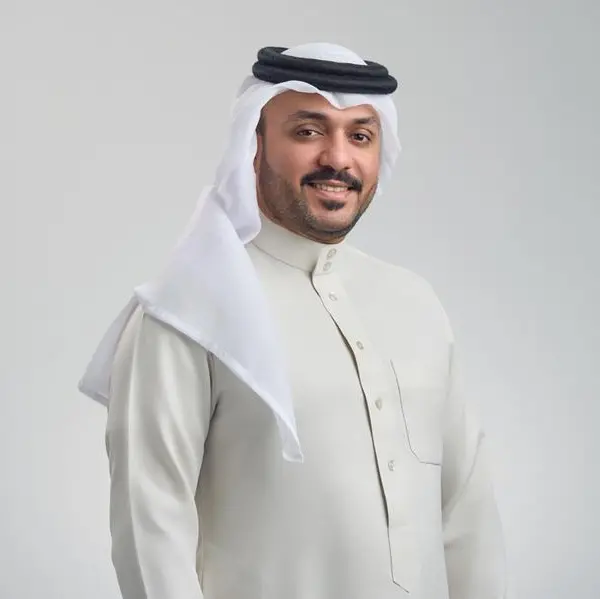Dubai: Every day, over 100,000 flights transport over 10 million passengers across a global air transportation network comprising over 1,400 scheduled airlines, 26,000 aircraft in service and 3,900 airports. The aviation industry is increasingly recognizing the need for accommodating People with Disabilities in airports and into airlines.
A big number passengers with disbailities have long been complaining about lost or damaged wheelchairs, struggles with access on airplanes and in airports, and poor customer service. And not to mention of lack of trained airport and airline crews and baggage handlers. A survey has found that 72 percent of passengers experienced physical obstacles or miscommunication with airlines, and 65 percent with airports.
Not only do people with disabilities represent a growing percentage of the world’s population, they are increasingly able to travel by airplane. For people with disabilities, an aviation journey which is free of barriers remains too often, and for too many, an intangible reality. The air transport industry continue to play a leading role in removing barriers that prevent the safety, comfort and ease of access to air transportation for people with disabilities.
The International Classification of Functioning, Disability and Health (ICF), which is the World Health Organisation (WHO) framework for measuring health and disability at both individual and population levels, defines disability as “an umbrella term for impairments, activity limitations and participation restrictions”, with over one billion people estimated to have one or more disabilities equating to just over 15 per cent of the global population.
The UN International Civil Aviation Organization (ICAO), International Air Transport Association (IATA), and Airports Council International (ACI) have been championing the need for making the aviation industry accessible to all whatever the physical limitations.
The ICAO, which codifies the principles and techniques and planning and development of international air transport, has been active in this domain since a long time. In 1969, it passed a provision on direct aircraft-aircraft transfer of invalid passengers in transit and in 1990 added elderly and disabled passengers. It reviewed problems of people with disabilities in using air services -accessibility to aircraft, movement, facilities and services on board, contacts with reservations/travel agents, attendants and fares and charges. In 1997, it introduced a new section in Chapter 8 of Annex 9 and defined a ‘person with disabilities’.
It says: “Any person whose mobility is reduced due to a physical incapacity (sensory or locomotor), an intellectual deficiency, age, illness or any other cause of disability when using transport and whose situation needs special attention and the adaptation to the person’s needs of the services made available to all passengers.” It told its member-states to ensure that airport facilities and services are adapted to the needs of People with Disabilities (PWDs), including lifting systems, designated pick-up/drop-off points, special transport services and parking facilities and transfer from one aircraft to another. It also set minimum standards of accessibility on board aircraft, accessibility standards for new aircraft, disability aids free of charge in cabin or as priority baggage, battery-powered devices along with allowing travelling of PwDs without medical clearance.
First published in 2013, the ICAO’s Manual on Access to Air Transport by Persons with Disabilities explained in details about their arrival and moving through an airport, use of facilities, check-in services, airport facilities, accessible routes and passageways, security screening and border checks, boarding and disembarking an aircraft, lifts and ramps and transfer of mobility aids. The manual provides guidance on services and features required to meet the needs of persons with disabilities during all stages of travel by air. It also provides, inter alia, guidance on the provision of information and training for professionals and staff working with persons with disabilities, in keeping with the general obligations of States under the 2006 UN Convention on the Rights of Persons with Disabilities.
The IATA, a trade association of the world’s 290 airlines representing 117 countries, at its 75thAnnual General Meeting (AGM) in June 2019, has unanimously approved a resolution to improve the air travel experience for people living with disabilities and confirming the commitment of airlines to ensuring that they have access to safe, reliable and dignified travel. The IATA’s core principles aim to change the focus from disability to accessibility and inclusion by bringing the travel sector together with governments to harmonize regulations and provide the clarity and global consistency that passengers expect.
IATA Resolution 700 was first adopted in 1952, making IATA the first industry association to set standards on the acceptance and carriage of passengers requiring assistance. The association wants the ICAO to apply IATA’s core principles as the basis for its multilateral initiatives on accessibility for passengers with disabilities. Airlines and airports are working together to ensure that wheelchair assistance is available to those who need it and, in parallel, are also working to develop other forms of assistance for passengers who are mobile but do not feel comfortable navigating through a large airport. For passengers with disabilities who travel with their own mobility aids, damage when stowed is a major concern. One option under consideration is to develop standard procedures related to the loading of passengers’ mobility aids.
The IATA has recently published a training book, Make Travel Inclusive. It is a guide for travel sellers – travel agents and operators – on the processes for requesting special needs services for customers from travel providers like airlines, hotels, rail companies, and attractions. The focus of the booklet is on the travel professional to ask the right questions, be familiar with all special needs and ensure that the support is requested as per industry standards.
ACI, the trade association of the 1,960 airports in 176 countries, has recently updated its handbook to help airports improve the overall airport experience for persons with disabilities and includes best practices to accommodate passengers with sensory disabilities and examples of leading-edge practices such as accessible toilet facilities, sign language videophone booths, wayfinding and signage. The handbook helps to ensure that airports provide ease of access to persons with disabilities and that the facilities meet accessibility standards.
The ACI is confident that implementation of the recommendations will contribute significantly towards the goal of barrier-free airports and air travel could become smoother and less fraught for disabled passengers. One of its top priorities is helping airports to ensure the efficient management of the flow of passengers, baggage, cargo and mail through airport facilities, ensuring that services are delivered in a healthy, safe and secure environment. It also consists of meeting and exceeding the needs and expectations of customers throughout their entire journey through an airport, bearing in mind the different requirements of security, immigration and customs.
-Ends-
For further information, please contact:
Ghassan Suleiman Amhaz
General Coordinator of Summit
Mobile Number: +971 50 644 1721
Or the Summit Organiser:
Nadd Al Shiba PR & Event Management
Mohammed Akram
Mobile: +971 55 107 5546
Tel: +9714-2566707
Email: dubaiaccessibletourism@naddalshiba.com
The World Health Organisation (WHO) estimates that the number of people who will need of assistance ranging from manual wheelchairs to advanced technologies and smart devices will double from one about billion today to about two billion by 2050.
According to Lonely Planet, 50% of People with Disabilities would travel more if suitable facilities were available to them wherever they travelled. Studies show that around 88% of people with a disability take a holiday each year. At least 54% of people with access requirements avoid going to new places if they cannot find them accessible to them.
A whopping 50 million people with special needs in the Middle East are looking to visit cities and tourist destinations that provide appropriate services to them as per their needs.
Disclaimer: The contents of this press release was provided from an external third party provider. This website is not responsible for, and does not control, such external content. This content is provided on an “as is” and “as available” basis and has not been edited in any way. Neither this website nor our affiliates guarantee the accuracy of or endorse the views or opinions expressed in this press release.
The press release is provided for informational purposes only. The content does not provide tax, legal or investment advice or opinion regarding the suitability, value or profitability of any particular security, portfolio or investment strategy. Neither this website nor our affiliates shall be liable for any errors or inaccuracies in the content, or for any actions taken by you in reliance thereon. You expressly agree that your use of the information within this article is at your sole risk.
To the fullest extent permitted by applicable law, this website, its parent company, its subsidiaries, its affiliates and the respective shareholders, directors, officers, employees, agents, advertisers, content providers and licensors will not be liable (jointly or severally) to you for any direct, indirect, consequential, special, incidental, punitive or exemplary damages, including without limitation, lost profits, lost savings and lost revenues, whether in negligence, tort, contract or any other theory of liability, even if the parties have been advised of the possibility or could have foreseen any such damages.



















